Fermentation & Life Study Studio and Café Ufufu
Sep 17,2020
Fermentation & Life Study Studio and Café Ufufu
Sep 17,2020
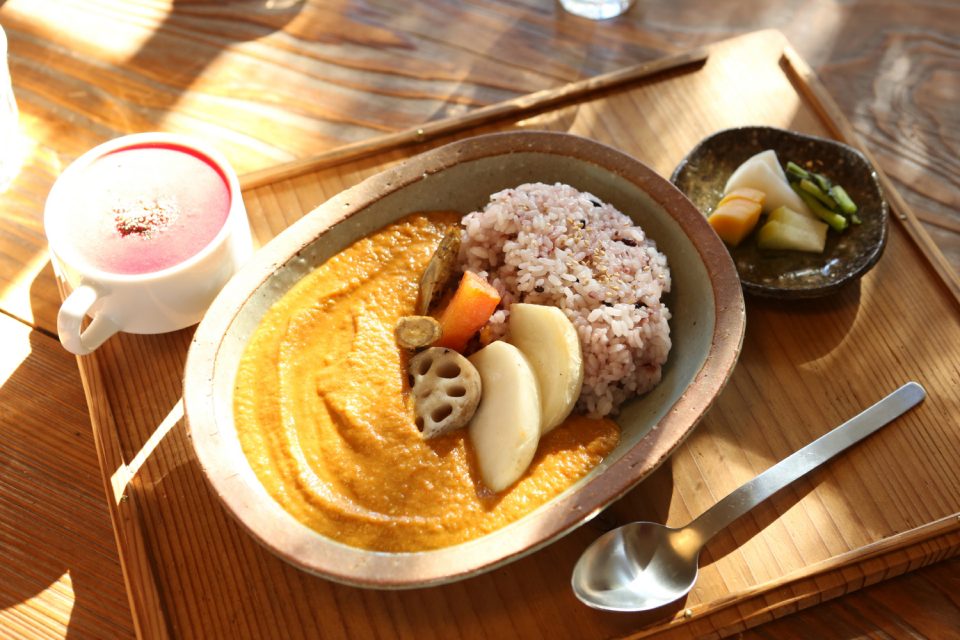

“Fermented foods make my body feel more at ease,” says Terada Satomi, a saké lees cook and expert who runs the Fermentation & Life Study Studio and Café Ufufu [a Japanese onomatopoeic word for the sound of a soft giggle] at the foot of Kozaki Shrine in Kozaki, Chiba.
Somehow nostalgic, comforting to the palate, always delicious, gentle on the stomach, and something you want to savor again and again — this is how Terada describes the power of fermentation, which resonates deeply with the Japanese soul and revitalizes it. “I want this to be a place of fermentation that uplifts the hearts of those who gather here.”
We spoke with Terada about her vision for her fermentation studio and asked her to share an easy fermentation recipe that people can try at home.
Terada is the second daughter of the 23rd-generation owner of Terada Honke, a saké brewery with more than 340 years of history. Her husband, Masaru, took over the business as the 24th-generation owner. The previous owner changed the direction of Terada Honke, committing to natural saké brewing fermenting pesticide-free rice with microorganisms endemic to the brewery and relying on manual practices with minimal use of machinery. The saké lees and koji [rice malt] that are by-products of this handmade saké brewing process have only a mild acidity, are gentle on the body, and are rich in nutrients.
In addition to common uses such as amazake [a sweet drink made from koji], kasujiru [a soup with a saké lees base], Narazuke [vegetables pickled in saké lees], and kasuzuke [fish or vegetables pickled in saké lees], saké lees can be used to accent everyday dishes or to flavor Western-style cuisine.
Despite her upbringing, Terada admits that she actually doesn’t like saké or saké lees. She began helping with the family business only after marrying Masaru. Before that, she had studied macrobiotics in Tokyo and worked at a café that served dishes made with millet and other grains.
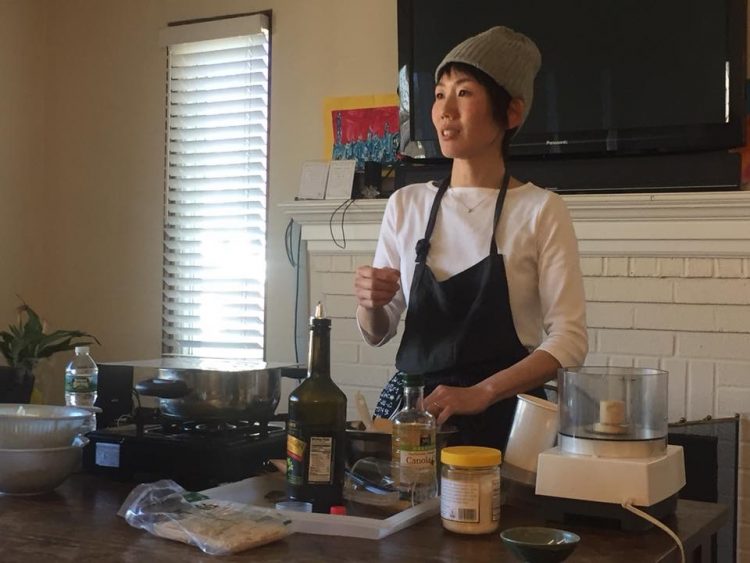
Terada Satomi, saké lees cook and expert
“I was considering trying my hand on the producer’s side, when I remembered: ‘Come to think of it, my family runs a saké brewery’. [laughs] So I returned to my family’s home and started helping out with the business. That’s when I rediscovered the fascinating depth of fermentation. From there, I gradually developed the idea of wanting to share this amazing world with people like me who don’t drink alcohol.
“I thought that a café with broad appeal might be a way to approach not only people who like saké and come to visit Terada Honke but also other people as well.”
She began creating recipes using koji and saké lees because she felt it was a shame that these ingredients were often underutilized or discarded, either because people didn’t know how to use them or because they only knew how to use them in a limited number of dishes, or else because, like Terada, they found the taste of saké lees or koji unappealing.
With this vision in mind, Terada opened the Fermentation & Life Study Studio and Café Ufufu on a corner of the premises of Terada Honke, known for its natural saké brewing. It’s located in the first floor of a building visible at the end of a walkway between Terada Honke’s brick wall and an adjacent building.
The 40-year-old building was formerly a dormitory for workers at a nearby brewery. The Teradas acquired the building, renovated it, and opened the studio and café in 2017.
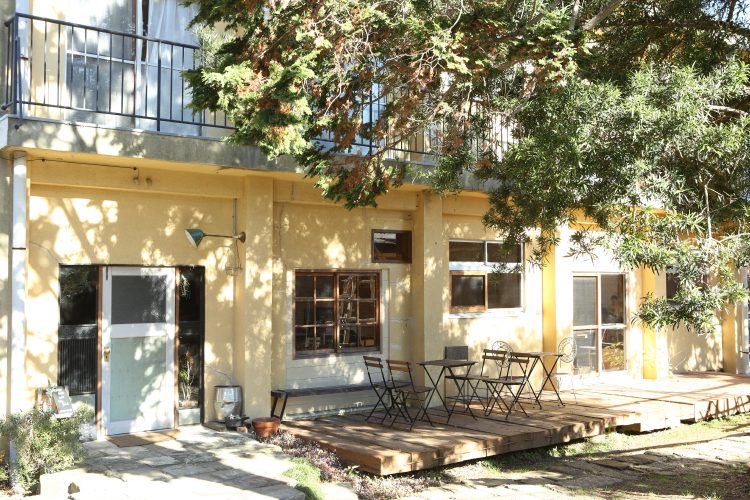
“The carpenter who did the renovation had great taste, carefully preserving the old elements while creating something new. We enlisted the help of the brewery workers and friends for the parts we could do ourselves. We repurposed large wooden lids, barrels, and tools that were once used in the saké brewery as interior doors and tables.”
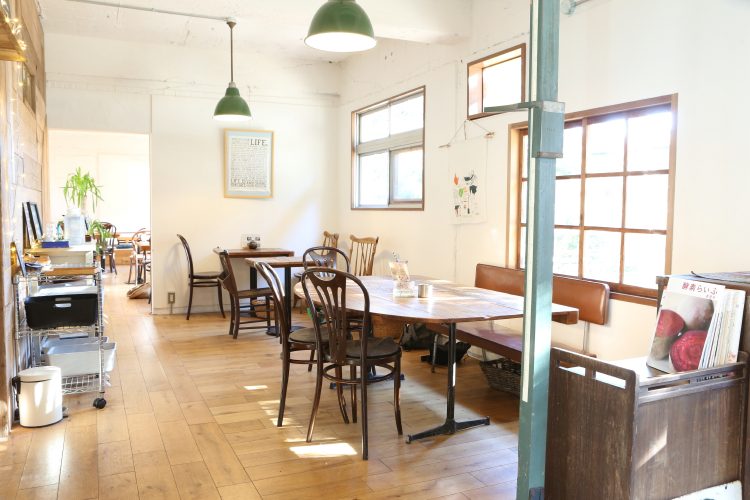
The café and studio are filled with natural light, creating a cozy space with a nostalgic feel
The ingredients, sauces, seasonings, and soups served at the café incorporate koji, saké lees, and amazake produced from Terada Honke’s saké brewing process. These ingredients are packed with the goodness of fermentation.
“The ingredients are much like the café’s interior, which makes use of things that would otherwise be discarded.”
Besides the saké lees and koji from Terada Honke, the café sources ingredients like rice, vegetables, canola oil, and rice flour from local farmers — all made with care by people in the local community. This attention to detail reflects Terada’s commitment to using as many natural ingredients as possible to create meals that delight the body.
When she first opened the café however, she had doubts about whether she was effectively getting her message across.
Despite these doubts, she experimented with many recipes that include saké lees and koji and began sharing them on the café’s website. As she developed and offered an array of fermented dishes, more and more regular customers began coming to the café specifically for its offerings, rather than to visit the brewery.
Today, the café attracts not only people in the local community but also many fans who travel from outside the area.
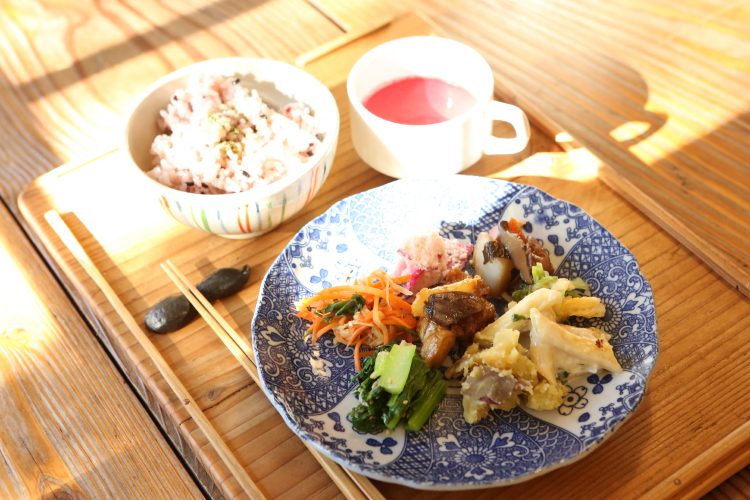
The daily lunch special features seasonal side dishes prepared with fermented condiments and naturally brewed seasonings from Terada Honke
“Among our many recipes, the most popular dishes are the daily lunch special, which features different side dishes each day, amazake curry, and cream gratin made with saké lees and soy milk. Interestingly, when you pair Japanese fermented foods with non-Japanese dishes, they somehow evoke a nostalgic Japanese flavor. The gentle, soothing sensation when eating fermented foods feels natural, as it makes sense that Japanese people should eat foods that come from Japan’s soil. Maybe that’s why I feel healthy and don’t get as tired when I eat fermented foods every day.”
Café Ufufu occasionally holds events, workshops, and cooking classes, all based on the concept of sharing the deliciousness and fun of fermentation.
Terada’s aim is to nurture Café Ufufu into a venue for fermentation. Naturally, one role for the café is to connect the culture of fermentation to the next generation through eating and learning. But beyond fermented foods and the mechanisms of fermentation, Terada wants it to be a place where visitors can engage in a wider range of cultures relating to clothing, food, and living and a venue where the hearts and bodies of visitors are uplifted and become bubbly.
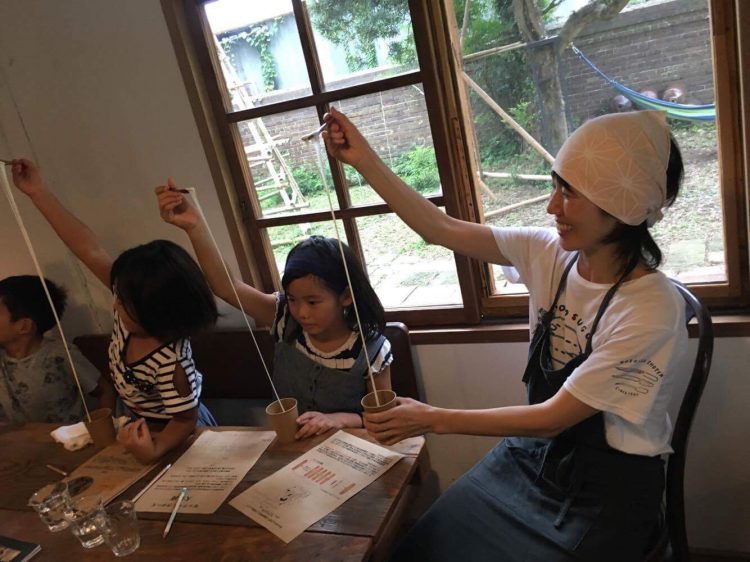
Café Ufufu holds regular workshops for kids. Pictured is a scene from a cheese-making class held in collaboration with Sen, a local cheesemaker.
“If you add water to freshly squeezed saké lees and let it sit for a while, small bubbles begin to form, signaling that fermentation has started. I would be delighted if the hearts and bodies of those who visit here feel as light and buoyant as those fermentation bubbles when they leave.
“Just as foods fermented by the workings of microorganisms do not spoil, I believe that by eating delicious meals and gaining new knowledge, our minds and bodies can also ferment in a way that prevents decay. I hope to help foster that kind of emotional fermentation.”
As a cook, Terada develops easy, delicious fermentation recipes using readily available koji and saké lees. We asked her to share how to make saké lees crackers, one of her large collection of recipes.
These crackers are perfect as a snack for kids and as an appetizer for adults, especially when paired with Terada Honke’s saké.
“Both my kids and I dislike the taste of saké lees. So when I started developing the menu for the café, I would add saké lees to a dish and give it to them to taste. They would always complain: ‘You put saké lees in again!’ But they’ll munch down on these saké lees crackers without a second thought.”
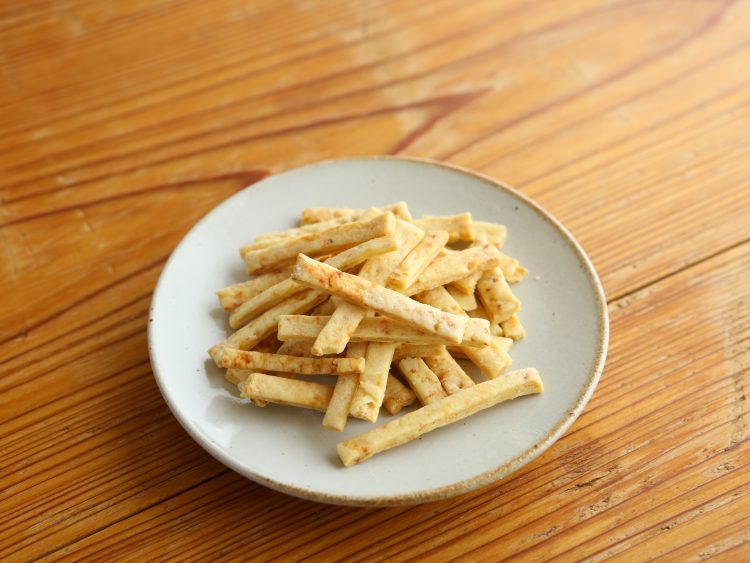
The baked crackers are crispy and aromatic, with a subtle, lingering cheese-like flavor despite being made with saké lees. Saké lees from Terada Honke has a flavor closest to cheese because of its natural saké brewing process.
“You can enjoy different cracker tastes depending on whether you use saké lees from Daigo no Shizuku, a Terada Honke saké brewed by emulating a doburoku (unrefined saké) method known as bodaimono [originally developed by a temple in Nara], or saké lees from Musubi, a saké brewed with sprouted brown rice. You can serve the crackers plain as a kids’ snack. When arranging them for adults, we recommend adding a little black pepper to the mix before adding the water. I would be so happy if people can experience the charms of fermentation from making confectionaries that highlight the umami taste and flavor of saké lees.”
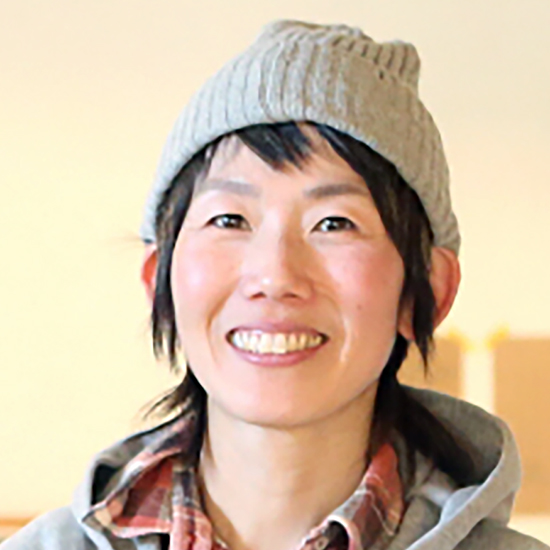
Fermentation & Life Study Studio and Café Ufufu
Fermentation & Life Study Studio and Café Ufufu
Terada is a saké lees cook and expert. Born and raised in a family that runs a saké brewery, she creates and shares recipes that incorporate readily available saké lees and koji into your daily life in a fun and delicious way. The recipes she creates are served at her Fermentation & Life Study Studio and Café Ufufu. She occasionally holds events and workshops at her studio / café with the aim of turning the space into a fermentation venue where people can learn about the culture of fermentation and pass it on to future generations.